Use my ultimate guide to Japanese tableware to learn the must-have bowls, plates, and utensils for a traditional Japanese meal, how to arrange your table setting, and where you can buy these pieces.

Are you interested in serving a Japanese meal (or known as washoku 和食) in a traditional Japanese setting? Imagine recreating the dining experience you’ve had from your memorable ryokan stay in your very own home!
In this post, I’ll show you exactly what you will need for tableware to present a typical Japanese meal. I also included the measurements so you can find similar-size Western plates and bowls if you have to use them.
Trust me, everyone can pull off a Japanese-style table setting with ease and confidence. Let’s get to it!
Table of Contents
The Must-Have Japanese Tableware

1. Rice Bowl (Ochawan or Chawan) お茶碗

The most “personal” element among Japanese tableware is the rice bowl. In Japan, each family member may have their own personal rice bowl dish with different sizes and materials. Dad may get a big ceramic rice bowl, mom may use a porcelain rice bowl with sakura pattern, the daughter may use a modern cat design rice bowl, and the son may use a character print on the rice bowl.
There is a couple of rice bowl set called Meoto Chawan (夫婦茶碗). The husband gets the big bowl and the wife gets the smaller bowl. There are also rice bowls for children, while toddlers use plastic rice bowls (yes, Japanese toddlers can be picky and temperamental during mealtime too).
The concept here is about customization for personal liking, which I think makes the dining fun and intimate. Since Japanese cuisine focuses on seasonality, you may change up the bowls based on the seasons.
Size:
- 12 cm/4.7″ (4寸) in diameter, 6 cm/2.4″ in height, contains 150 g/5.3 oz of steamed rice.
- 11.4 cm/4.5″ in diameter, 5.7 cm/2.3″ in height, and contains 130 g/4.6 oz of steamed rice (for a female bowl of Meoto Chawan)
2. Soup Bowl (Shiruwan or Owan) 汁椀・お椀

Since shiruwan or owan is used to serve hot soup, it is often made with the wooden material. Unlike rice bowls, everyone in the family typically uses the same type.
On a special day or holiday, soup is served in a shiruwan/owan with a lid. It is usually lacquered and has beautiful designs such as flowers.
Size:
- 12 cm/4.7″ (4寸) in diameter, 6 cm/2.4″ in height, contains 220-280 ml/roughly 1 cup of liquid.
3. Medium Plate (Chu-zara) 中皿

This plate is mainly used to serve the main dish (主菜). When you have a table with big serving plates and bowls in the middle, these medium plates can be used as an individual plates.
When used in a non-typical Ichiju Sansai setting, you can use this medium plate for a toast, etc.
This plate is very helpful so it’s nice to have variations of designs, shapes, and materials for different seasons and table settings.
Size:
- 21 cm/8.3″ (7寸皿) – A perfect dish for Ichiju Sansai’s main dish. A serving plate for a la carte.
- 18 cm/7″ (6寸皿) – A dish to fit Shokupan (Japanese pullman loaf). Good size for single serving salad and side dish.
Side Notes for Big Plate (Oh-zara 大皿):
- 30 cm/11.8″ (10寸皿・尺寸皿) – A serving platter for a big party, sashimi platter.
- 27 cm/10.6″ (9寸皿) – A serving platter for 4, great for plating ingredients for hot pot.
- 24 cm/9.4″ (8寸皿) – A one-plate dish for pasta and curry.
4. Small Plate (Ko-zara) 小皿

These small plates are perfect for side dishes, desserts, and snacks, or you can use them as an extra plate to share.
Smaller plates can be used as an accent for the table setting. Have fun collecting different colors and shapes to spice up your table.
Size:
- 15 cm/5.9″ (5寸皿) – Good size for an extra plate to share or a slice of cake.
- 12 cm/4.7″ (4寸皿) – Good for small dishes like Cold Tofu, pickles, and Japanese sweets (wagashi).
5. Tiny Plate (Mame-zara) 豆皿

Mame-zara is used for soy sauce for sashimi, spice/condiments, or garnish (green onion, grated ginger) for Cold Soba, or small ingredient.
Size:
- 9 cm/3.5″ (3寸皿) – Good for bite-size dishes or condiments like soy sauce.
- 6 cm/2.4″ (2寸皿) – Good size for putting a garnish. It can be used as a chopstick rest.
6. Small Bowl (Kobachi) 小鉢

Kobachi is a small bowl normally used to hold Sunomono (vinegared salad), Aemono (dressed dish), Nimono (simmered dish), or Chinmi (special delicacies). It also can be used as an individual dish for hot pot.
There is no “specific” size for kobachi bowls, but there are three rough sizes listed here.
Size for Small Kobachi: Roughly 12 cm/4.7″ in diameter.
Side Notes for Medium & Big Kobachi Bowls:
- 15 cm/5.9″ (5寸) in diameter (Medium Bowl, 中鉢) – Perfect for a two-serving main dish (with soup/sauce) or single-serving soup and donburi dish.
- Roughly 22 cm/8.7″(7寸) in diameter (Big Bowl, 大鉢) – Perfect for a four-serving main dish (with soup/sauce) or single-serving noodle soup dish.
How to Set up the Table For Japanese-style Dining

Before setting up the table, it is helpful to understand the elements of a Japanese meal. Known as the Ichiju Sansai, a typical Japanese meal at home involves one rice with several side dishes and a soup. I included a more in-depth article on Ichiju Sansai for your reference.
The location of each dish is set for Ichiju Sansai: Steamed rice on the left front, and soup on the right front. Then the main dish is behind the soup, and side dish 1 is behind the steamed rice. Side dish 2 and pickles are located in the middle space.
Chopsticks & Chopstick Rest

When you serve a meal in Japanese table setting, chopsticks and chopstick rests (hashioki) are a must-item. You may ask if chopstick rests are necessary. Well, chopstick rests are there for hygiene reason so the used chopsticks don’t touch the table. Plus, don’t you think they add a nice accent to the setting?
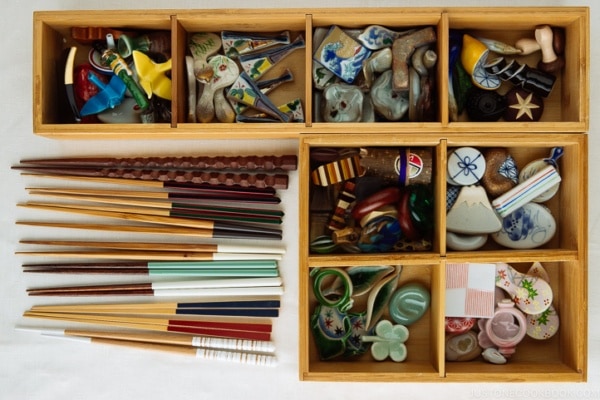
There are so many designs for chopsticks and chopstick rests, and it’s fun to collect them so you switch them up for different seasons and occasions.
Bonus: Nice-to-Have Tableware
These are not essential, but they are a great add-on for those of you who cook Japanese dishes regularly. If you have the kitchen space, you should consider getting them:
1. Rice/Noodle Bowl (Donburi) 5寸深丼

A large bowl used for soba or udon noodle soup as well as rice bowl (donburi) dish.
Size: 15 cm/5.9″ in diameter, 8.5 cm/3.3″ in height contains 900 ml.
2. Ramen Bowl (Ramen Bachi) ラーメン鉢

A large bowl used for ramen.
Size: 18 cm/7″ in diameter, 9.5 cm/3.1″ in height, contains 1400 ml.
For Ramen Bowls, check out these online shops like MTC Kitchen or MIYA Japanese Tableware and Gifts.
3. Soba Dipping Dish (Sobachoko) 蕎麦ちょこ

A tube-shaped dish used for soba dipping sauce and small dishes.
Size: 8 cm/3.1″ in diameter, 7 cm/2.8″ in height, contains 180-200 ml.
4. Steamed Cup (Mushi Wan) 蒸し碗
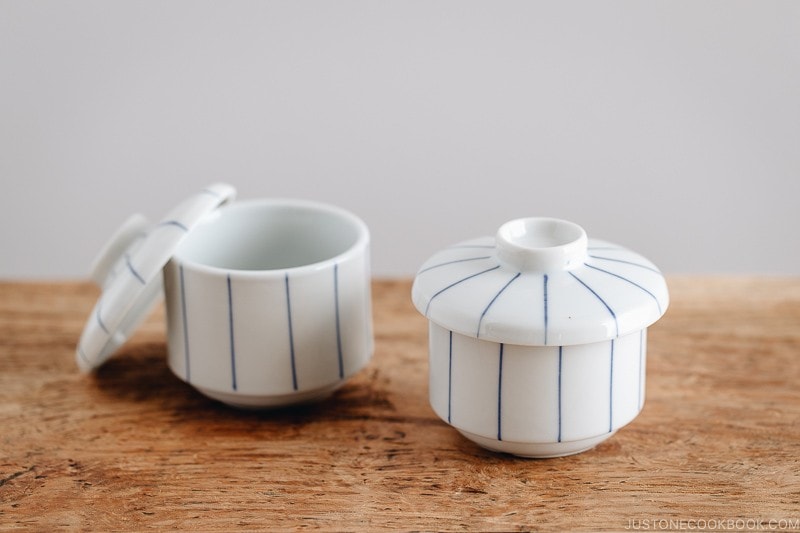
A cup designed for steaming, and comes with a lid. It’s used for dishes like chawanmushi.
Size: 8 cm/3.1″ in diameter, 8.5 cm/3.3″ in height, contains 200-230 ml.
5. Teacup (Yunomi Jawan) 湯呑み茶碗

A cup used for Japanese green tea.
Size: The size varies depending on the occasion.
Measurement
Japanese tableware comes in various sizes and shapes, but they are guided by these measurements to create a well-balanced meal.
The measurement unit sun (寸) is used for Japanese tableware and it was introduced in the ancient history of Japan derived from measurements and proportions of the human body, collectively known as “Shindoshaku” (身度尺).
- 1分 = 0.1寸 = roughly 0.3 cm
- 1寸 = 10分 = roughly 3 cm
- 1尺 = 10寸 = roughly 30 cm
Additional Tips & Resources
1.Mix & Match – When comes to table set up, you don’t have to follow the strict rule of using only Japanese designed tableware. Some of the western-style plates and bowls can work to complement the table. Consider white or earth tones when choosing your colors. Handmade ceramic bowls and plates by your local artisans make an excellent choice too. You may be able to pick out designs that are very similar to Japanese tableware or in symmetry with Japanese elements.
2. Think harmony – In addition to colors, shapes, and textures, you will learn that the Japanese dining aesthetic places an emphasis on harmony. Which is what washoku 和食 all about. Everything has a place and purpose. When selecting your tableware, you don’t have to look for overly ornated choices but work on creating a balance to guide your artistic arrangement.
Where Can You Find Japanese Tableware?
JOC Goods carries my very own curated collection of Japanese tableware and kitchenware. Our selections focus on the traditional craftsmanship of small kilns and artisan workshops in Japan. We at Just One Cookbook launched this new e-commerce site in late 2024 to provide timeless and high-quality pieces that anyone can own.
This is a dream project of mine that’s inspired, in part, by readers like you! If you’d like to learn more about this journey, please read my Building JOC Goods post.
In Japan
If you have the opportunity to visit Japan, check out my article on 10 Cookware & Tableware You Should Get from Japan.
The easiest place to find Japanese ceramics and kitchen items is to go to the kitchen floor (usually 7th or 8th floor) of the nearest department stores or Tokyu Hands. If you can spend some time to shop ceramics during your trip, you may want to find ceramic shops in the cities you are visiting.
If you are in the Tokyo area, I would suggest checking out Kappabashi Kitchen Town, and here’s a small list of popular ceramic shops in Tokyo.
- Allegory Home Tools in Ebisunishi, Shibuya-ku
- Amahare in Shirokanedai, Minato-ku
- Aoba-do in Shirakawa, Koto-ku
- At Kiln Aoyama in Minami Aoyama, Minato-ku
- Beniya Mingeiten in Komaba, Meguro-ku
- Bloom & Branch in Minami Aoyama, Minato-ku
- Bondo in Kichijoji Hon-cho, Musashino-shi
- Casica in Shinkiba, Koto-ku
- Chidori in Misaki-cho, Chiyoda-ku
- CLASKA Gallery & Shop “DO” in Chuo-cho, Meguro-ku
- Dengama in Nishi Asakusa, Taito-ku
- FALL in Nishiogikita, Suginami-ku
- Fragile in Ginza, Chuo-ku
- Gyokusendo in Minami Aoyama, Minato-ku
- Japanese Pottery shop (Aritayaki Yakimono Ichiba) in Hiroo, Shibuya-ku
- Jokogumo in Shirogane-cho, Shinjuku-ku
- Kagure Omotesando in Jingumae, Shibuya-ku
- Kahahori in Kichijoji Minami-cho, Musashino-shi
- Kakesu Zakkaten in Kappabashi Kitchen Town, Asakusa, Taito-ku
- Kappabashi Kitchen Street in Asakusa, Taito-ku
- KnulpAA Gallery in Shakujiimachi, Nerima-ku
- Koharuan in Yarai-cho, Shinjuku-ku
- Kohoro in Tamagawa, Setagaya-ku
- La Ronde d’Argile in Wakamiya-cho, Shinjuku-ku
- Lion Pottery in Chuo-cho, Meguro-ku
- MARKUS in Kichijoji Honcho, Musashino-shi
- Migo Labo in Gohongi, Meguro-ku
- Migratory in Kamimeguro, Meguro-ku
- Mist∞ in Kichijoji Kitamachi, Musashino-shi
- Monsen in Tamagawa, Setagaya-ku
- Outbound in Kichijoji Honcho, Musashino-shi
- Pond Gallery in Kamimeguro, Meguro-ku
- POTPURRI in Shirakawa, Koto-ku
- Proto Tablewares and Precious in Kuramae, Taito-ku
- Roundabout in Uehara, Shibuya-ku
- Rozan in Nishiogikita, Suginami-ku
- Shouan Bunko in Shouan, Suginami-ku
- SML in Aobadai, Meguro-ku
- Sonomono in Nagasaki, Toshima-ku
- Sora in Himonya, Meguro-ku
- Spiral Market in Minami Aoyama, Minato-ku
- Style Hug in Yoyogi, Shibuya-ku
- Syuro in Torigoe, Taito-ku
- Takahashi Sohonten in Kappabashi Kitchen Town, Asakusa, Taito-ku
- Takumi in Ginza, Chuo-ku
- Tasogare-do in Nezu, Bunkyo-ku
- Tenoha in Daikanyama-cho, Shibuya-ku
- Teshigoto in Todoroki, Setagaya-ku
- Touan Yabukita in Kappabashi Kitchen Town, Asakusa, Taito-ku
- Utsuwa Aoba-do in Minami Aoyama, Minato-ku
- Utsuwa Daifuku in Minami Aoyama, Minato-ku
- Utsuwa Dokoro Kurumi in Kamiogi, Suginami-ku
- Utsuwa Kaede in Minami Aoyama, Minato-ku
- Utsuwa Kenshin in Shibuya, Shibuya-ku
- Utsuwa Shizen in Jingumae, Shibuya-ku
- Utsuwa Party in Komaba, Meguro-ku
- Vada Antiques in Kichijoji Hon-cho, Musashino-shi
- Wise Wise Tools in Akasaka, Minato-ku
- Yuyujin in Takaban, Meguro-ku
- Zakka Tsuchi no Kioku in Asagaya Minami, Suginami-ku
With this, I hope you’re inspired to do a Japanese table set-up the next time you prepare a Japanese meal at home. And if you do, don’t forget to snap a picture and share it with #justonecookbook on Instagram. I’d love to see them!
Also, if you know where to find gorgeous Japanese tableware in your local area, share it with us in the comments below.
Starting to build your kitchen for Japanese cooking? Here is my recommendation for the kitchen essentials.

How to Build a Kitchen for Cooking Japanese Food – A Beginner’s Guide


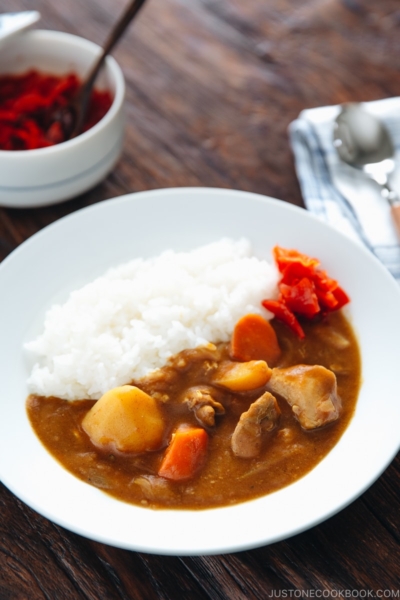
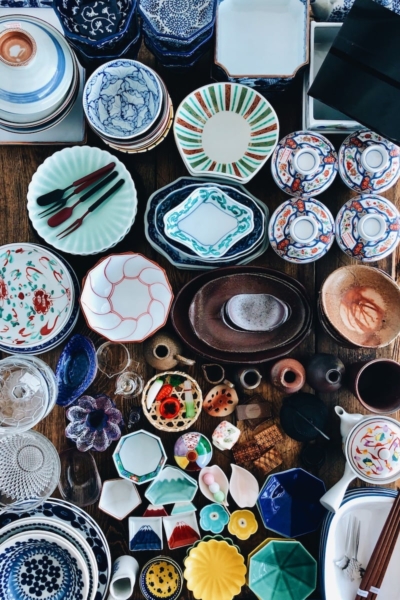




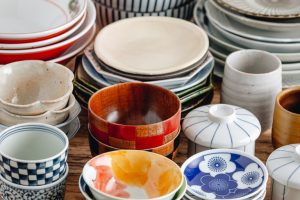
Your work is AMAZING! I have loved it for many years and am currently adopting a Japanese inspired diet plan, partly inspired by your recipes 🥰 But, I don’t own a dining table so having many dishes is hard… I see often you use some kind of a tray or Bentos as well. Would love to know suggestions for the most appropriate solution for a dinner where I need to eat on my lap for instance?
Hi, Megan! Thank you so much for your kind feedback! Nami and all of us at JOC are happy to hear you liked our website.
Here’s a link to Nami’s shop, where the tray and bento boxes were shown. We hope this helps! 🤗
https://www.amazon.com/shop/justonecookbook
Hi Nami,
I want to share that for your readers in London they can find some lovely Japanese Tableware at Doki in Harrow, North London.
Doki Japanese Tableware
207 High Road, Harrow
HA3 5EE
United Kingdom
I love your recipes and website. Thanks so much for sharing your knowledge!
Kind Regards,
Jo
Hi Jo! Thank you so much for your kind words to Nami and for providing the information about the London store. 🙂
This was a most fun topic! I just want to say the this is also a good place to learn KANJI so thank you for the Japanese character printings, for example “meoto” characters written as husband/wife, i was wondering “is that how you write and read it?” so i am far off from able to read “kun”/”on” reading and this helps me remember better.
Hi frances! We are so happy to hear you enjoyed this post.
Thank you so much for taking the time to read the post and sharing your thought with us!
I ordered some dishes from musubi kiln following your recommendation. I wanted some donburi bowls and sauce dishes. They arrived a few days ago. They are truly beautiful and I have now ordered some lacquer trays to set them on. Thank you for telling me about musubi kiln – and for the 10% off. A wonderful find. Once I have got the trays I will post some photos of your recipes in my beautiful new dishes.
Hi Fiona! We are glad to hear you enjoy shopping at Musubi Kiln as much as we do.
Thank you for your feedback!
Its very hepful for beginner in all of this. But i have question, do you recommend some kind of shop which can ship to poland in lower price? Im new in all of this but i really want to have some traditional tableware in my house. Greetings from Poland 🙂
Hi Martyna, Thank you so much for reading Nami’s post!
Nami’s recommended shops are listed under “Outside of Japan” in this post.
We believe Musubi Kiln will be able to ship it there. She highly recommends Musubi Kiln for one-of-a-kind tableware. Use the code “justonecookbook” to get 10% off!
We hope this helps!
this information was very helpful.Would you be able to help me identify some things about this piece of Japanese dinnerware? I would like to know who is the manufacturer, what is the design on the side and what is the function (are these bowls or cups?). They are approx 3” in diameter and I have a set of 6. Bottom has an M with a dash over it and it says JAPAN. Ivory high gloss interior. Ceramic?
Hi Dena, Thank you for reading Nami’s post and for your kind feedback!
The cup in the picture is a teacup (茶飲み茶碗). Generally, it is used to drink green tea. The design on the side is a pine tree, and you might often see as Bonsai(松の木 盆栽) tree.
As for the manufacturer, the description doesn’t ring a bell. We wish we could be more helpful.
This article was VERY HELPFUL.
THANK YOU!! 👍🏼👍🏼😊
Hi Marcus! Thank you very much for your kind feedback!
Nami and JOC team are so happy to hear this post helped you!
Nami -san, Love your posts and cookbook. There is also an Uwajimaya store in the Portland, OR area (Beaverton) that has everything Japanese. Also, the Behind the Museum cafe in downtown Portland. I also love a chopstick store in Hiroo in Tokyo called Hyozaemon. They have stunning sets. Thanks!
Hi Cristina! Thank you very much for reading Nami’s post and sharing the information!🙂
Dear Nami,
I’m grateful to you and your readers for this post on tableware, something I was thinking about last night when I was serving your version of the Gyudon dish. At first I was disappointed that I did not have enough of the same bowls and side dishes for 9 settings. I like the “eclectic” look of your settings, and if the food is tasty (as was the gyudon), what more could one ask! In Hawaii we previously had more stores with Japanese tableware, but only a few remain, mostly of the grocery store type: Marukai and Don Quixote have a small inventory of tableware. Iida’s Hawaii offers quite a selection of Japanese kitchenware and other household items, but it is an online store. Arigato, Nami-san!
Hi Betty! Thank you very much for reading Nami’s post and for your feedback.
We appreciate your input and for sharing the information! Thank you!🙂
In Sydney Australia there is a wonderful store called “Made in Japan” .
Mostly anything pottery and some knives.
The owners make trips to Japan and personally choose everything in their store.
https://www.mij.com.au/
Most of the Master Chef 2021 dishes came from this store.
Hi Bill! Thank you very much for sharing the store information! We will add it to the list. Thank you!🙂
If you are in the Seattle area, Uwajimaya has their main store in the International District, just a block away from the Light Rail stop to/from SeaTac Airport/Downtown Seattle. They also have stores in Renton (10 minute drive from the airport) and Bellevue (Close to Microsoft, Google et al). Hong Kong Market is a small local chain, it leans more Vietnamese/Thai than Japanese but they have a nice cookware section for tools and dishes as does 99 Ranch Markets. All three are primarily grocery, with lots of hard to find food items, but they have cookware as well.
Hi Katherine! Thank you very much for sharing the information! 🙂
Thanks for such an informative and unique post! I’ve just started collecting Japanese tableware and I am having so much fun with it. I would like to know, when I find a piece that I like e.g. a small plate, how many do you suggest I purchase for a family of three? Do I buy three? Four (one for spare)? Or just one (so each person uses a different style during each meal)? What is the most sensible way to do this?
Hi Penny! Thank you very much for reading Nami’s post and for your kind feedback!
The number of the set depends on each family’s preference but usually five sets (including one or two for spare). The design can be the same or different. Some occasional like New Year’s, etc., most likely family and guest use a particular occasional set.
We hope this is helpful.
In San Francisco, i always start here —> https://www.yelp.com/biz/kamei-restaurant-supply-san-francisco for Asian style dishes. Was there the this past saturday and found some beautiful kobachi for a gift. Great prices too!
Hi Steve! Thank you very much for reading Nami’s post and for your input!
Hi Nami! This post is so so helpful! Thank you so much! Actually, your blog is where I go whenever I need Japanese Recipes. I just know the dishes come out delicious and perfect each time.^^ I have several questions about chopsticks, specifically chopsticks for guests. Do Japanese families always have a set of chopsticks specifically for guests? If so, how many do they usually buy and should guest chopsticks be all the same design? If the guest/s are eating with the family, does the family still use their own personal chopsticks(and rice bowls) or must the table setting be uniform?
Hi Catherine! Thank you very much for reading Nami’s post and for your kind feedback!
Nami and JOC team are so happy to hear you enjoyed many of Nami’s recipes from our site.🥰
Regarding the chopsticks, Yes. Most Japanese families always have a nice set of chopsticks for guests. The number of the set depends on each family’s preference but usually five sets. The design can be the same or different.
A family usually uses their own personal set (chopsticks and rice bowls etc.) when inviting the guest. However, some occasional like New Year’s, etc., most likely family and guest use a particular occasional set.
We hope this is helpful.
Nami,
I’ve been enjoying your blog for several years, but somehow missed this article! I was googling Japanese dinnerware and you popped up. This is an excellent article and very thorough! I have not taken the plunge to purchase anything yet as I never knew what to get, but this has given me everything I need to know! Thank you so much!
Hi Jenna! Thank you very much for reading this post!
Nami and JOC team are so happy to hear this post was very helpful! Thank you for your kind feedback!😊